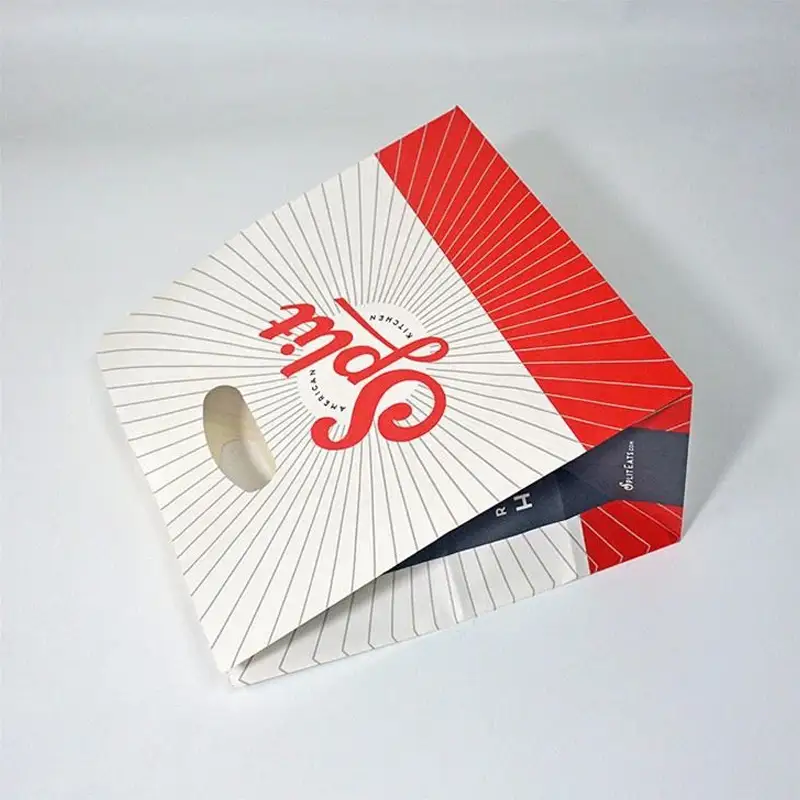In the packaging industry, when asked “How sturdy is this bag?”, most people instinctively follow up with, “What’s its grammage?” However, equating grammage directly with strength is like judging a person’s physical fitness by their weight alone—this is a cognitive shortcut full of pitfalls. Grammage, more accurately referred to as “basis weight,” is far more than just weight per unit area; it is a key that unlocks the performance code of Бумажные пакеты с высечкой. Its true value, however, lies in how we understand and apply it.

The Essence of Grammage: Beyond Weight, a Declaration of Structure
Grammage (g/m²), from a materials science perspective, reveals three decisive structural characteristics:
The Density Revolution of the Fiber Network: Higher grammage means a denser fiber network. This isn’t merely “more material” but an exponential increase in hydrogen bonds between fibers. Imagine upgrading from a sparse fishing net to a high-density nylon net—the integrity and resistance to damage undergo a qualitative leap.
The Stiffness Leap Driven by Thickness: Assuming consistent raw materials and manufacturing processes, grammage is strongly correlated with thickness. A material’s “bending stiffness” is proportional to the cube of its thickness. This means that increasing grammage from 150 gsm to 180 gsm (a mere 20% increase) can theoretically enhance its resistance to bending by over 70%. This is the engineering principle behind the tangible “qualitative change” in handfeel.
The Implicit Improvement in Substrate Uniformity: Achieving higher grammage often requires more precise fiber ratios and formation control during the papermaking process. This typically results in more uniform fiber distribution, directly reducing localized stress weak points and ensuring more stable performance.
Core Insight: Thus, grammage is essentially a composite structural indicator, simultaneously reflecting the material’s “volume,” “structural thickness,” and “network density.”
How Grammage Builds Strength: From Theory to Tactile Experience
Tensile Resistance—The Power to Resist Longitudinal Tearing
When you lift a heavy object, the handles and body of the bag primarily endure tensile stress. The dense fiber network of high-grammage paper distributes this stress across thousands of fibers and hydrogen bonds, sharing the load. To break it, more intermolecular forces must be overcome and more fibers ruptured. This is the microscopic explanation for why high-grammage Kraft Carrier Bags can carry heavier items.
Puncture and Burst Resistance—A Shield Against Unexpected Impacts
This performance heavily relies on the material’s thickness and the toughness of its fiber network. High-grammage paper provides a longer stress buffer path. When pressed by internal sharp objects or external impacts, its substantial fiber layer can absorb and dissipate energy through plastic deformation and fiber displacement, significantly reducing the risk of damage.
Stiffness—The Backbone of “Standability” and “Premium Feel”
Stiffness is key to a bag’s ability to stand upright and its solid handfeel. As mentioned, its cubic relationship with thickness means that increases in grammage have an amplified effect on stiffness. A high-stiffness paper bag offers:
- Ease of Filling: Stands upright on its own, improving packaging efficiency.
- Shape Retention: Maintains its designed silhouette even under load, conveying a premium brand image.
- Stable Carrying: Provides a reliable, solid grip, preventing excessive swaying.
Abrasion Resistance—The “Health Bar” for Extended Service Life
Paper bags inevitably experience friction during use. Abrasion is a process of gradual surface material loss. The thicker fiber layer of high-grammage paper acts like a thicker “wear reserve,” requiring a longer friction cycle before the inner structure is exposed, thereby effectively extending the bag’s service life.
Engineering Trade-offs: Precision Design Beyond “Grammage Alone”
In practice, however, blindly pursuing high grammage is a lazy and costly strategy. Scientific design is a delicate balance of performance, cost, and sustainability.
The Leverage Effect of Fiber Quality
Paper made from long-fiber virgin wood pulp at 120 gsm can have significantly higher actual tensile strength than paper made from short-fiber recycled pulp at 160 gsm. Fiber length and strength act as “amplifiers” or “attenuators” of performance. Therefore, the combination of “high grammage + inferior fibers” is highly inefficient, its performance far inferior to “medium grammage + superior fibers.”
The Alchemy of Structural Design
Rational structural design can multiply performance without significantly increasing grammage.
- Reinforced Handles: Using reinforcement patches at handle attachment points transfers stress from the lower-grammage bag body to higher-strength components.
- Bellows Sidewall Design: The pleated structure on the sides acts like “stiffening ribs” in architecture, providing additional vertical stiffness and cushioning capacity.
- Multi-layer Lamination: Bonding two sheets of medium-grammage paper often yields greater tear resistance and overall toughness than a single thick, high-grammage sheet.
The Invisible Empowerment of Chemical Agents
- Wet-Strength Agents: Can significantly increase the paper’s strength retention rate in humid environments, preventing even high-grammage paper bags from weakening rapidly when damp.
- Surface Sizing: Forms a protective film on the paper surface, effectively enhancing the abrasion and grease resistance of low-to-medium grammage papers.
Decision Framework: Matching the Most Elegant Solution to Your Scenario
- Ultimate Experience Scenarios (Luxury Goods, High-End Gifts): Recommend 150-200 gsm. The core goal here is to provide top-tier stiffness and a substantial, premium handfeel, perfectly supporting brand value. Safe load-bearing capacity is typically under 5 kg.
- General Commercial Scenarios (Retail, Takeout): 100-150 gsm represents the optimal balance of cost and performance. It provides sufficient strength (load-bearing 3-8 kg) and durability under cost control, meeting the vast majority of everyday needs.
- Heavy-Duty Load-Bearing Scenarios (Hardware, Building Materials): Require 180-300 gsm or multi-layer, medium-to-high grammage kraft paper. The core goal is to ensure extremely high tensile strength and burst resistance to handle loads over 10 kg and complex environments.
From “Parameter” to “Philosophy”
Grammage is the physical cornerstone and performance predictor for the strength and durability of paper bags. By increasing fiber network density and material thickness, it systematically enhances various mechanical properties.
However, exceptional paper bag design is by no means a numbers game of “chasing higher grammage.” It is a precise orchestration among grammage, fiber quality, structural design, and chemical agents.
The wise decision-maker should treat it as a key strategic variable, seeking the most elegant and precise engineering balance point amidst profound performance requirements, stringent cost constraints, and long-term sustainability goals.





